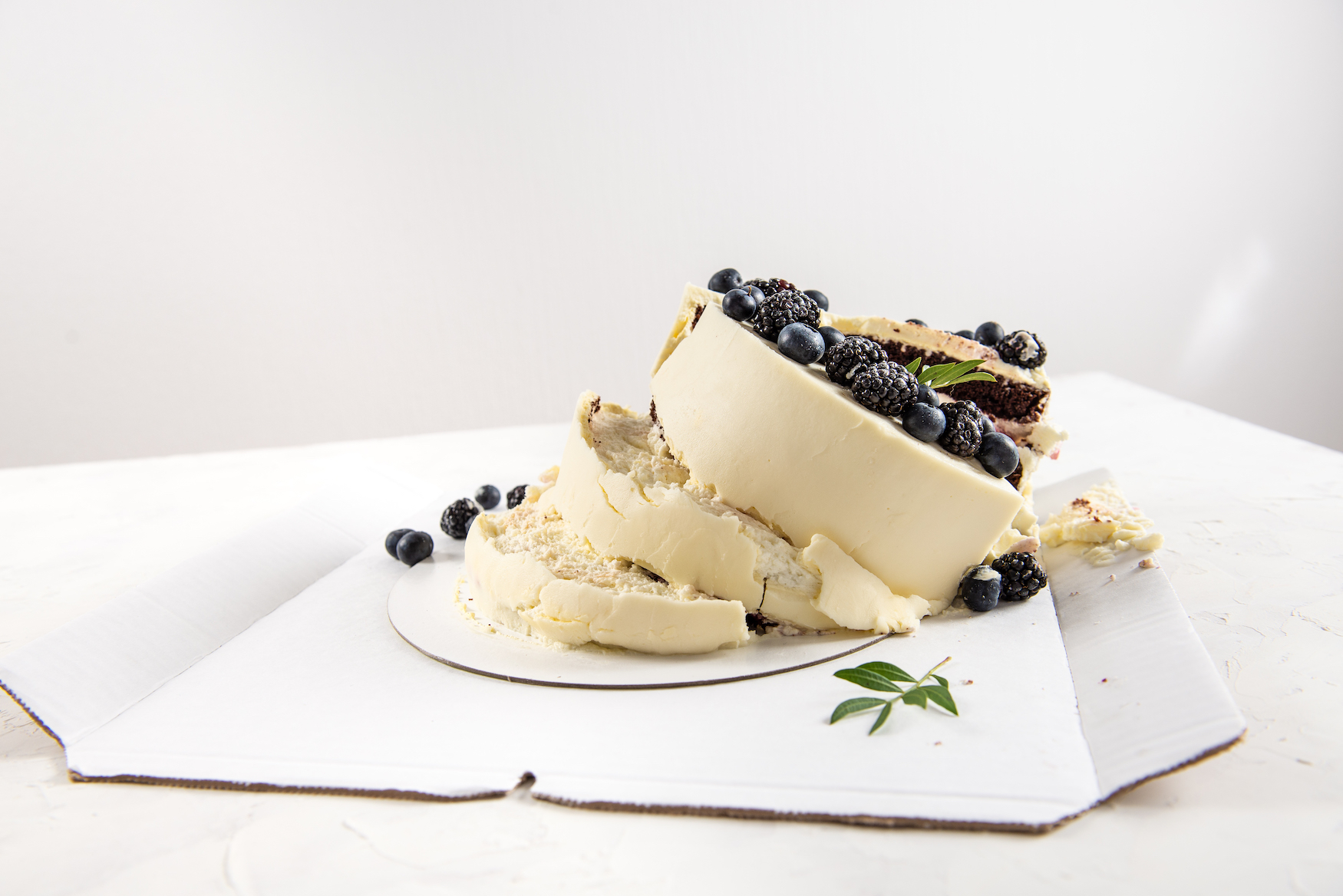Have you ever fallen victim to a cake with a sunken center?
You spend hours laboring over your batter, tirelessly whisking together your wet and dry ingredients before painstakingly pouring every last drop of the mixture into your cake pan…only to take out a freshly-baked cake that has a crater in the middle. Unfortunately for you, your cake is undercooked and, essentially, inedible.
If you feel alone in your baking struggles, fret not! Even seasoned bakers find it difficult to fully bake their cakes. In last week’s episode of the “Great British Bake Off,” Toby Littlewood struggled to bake his school cake, which sank in the middle.
Why do cakes develop those infamous sinkholes? And how can you prevent them? Here to answer all our cake-baking questions is Luisa DeGirolamo, chef-instructor of Pastry & Baking Arts at the Institute of Culinary Education’s New York City campus.
Your recipe may be incorrect
“The recipe could be incorrect, especially if we’re trying a recipe for the first time,” DeGirolamo said. “We’re just assuming that it’s correct because it’s available and printed — and it’s in a book or it’s online. So, it’s important to test out that recipe first, just to make sure that everything is correct.”
Your oven may be hindering your baking
“Everyone doesn’t have the same oven. You really need to get to know your oven and make sure that it is accurate. It’s important to make sure that it is the correct temperature — and it’s important to purchase an oven thermometer and make sure that what you’re pre-setting your oven to is what’s reading and showing up on that thermometer.”
Want more great food writing and recipes? Sign up for Salon’s free food newsletter, The Bite.
You may be overmixing — or undermixing — your batter
“When it comes to putting your ingredients together, make sure to read through the steps and don’t overmix your batter — which can definitely put that sink in the middle of your cake and deflate it, no matter what the accuracy of your temperature is. Also, be mindful of the opposite, undermixing, because we could be scared of developing gluten [which happens when overmixing the cake batter]. We don’t want to end up with a very chewy, not well-structured cake. However, when we’re undermixing, we’re doing the same thing as if we were overmixing it. That’s going to cause the cake to deflate in the middle.”
Your chemical leaveners may be expired
“One time, when I was baking, I scaled everything out and I put everything together. It was a recipe that I’ve used time and time again and it was the same oven that I’ve used before, so nothing was different. I was racking my brain as to why my cake sank in the middle. It turned out that my baking powder had expired and I didn’t even know. It’s one of those things you don’t even think twice about. Make sure that your chemical leaveners are not expired.”
You may be using too much baking soda or baking powder
“The other thing with chemical leaveners is not to add too much of one thing. Although it does make sense that using more baking soda or baking powder will help the cake rise. But if we’re not using the correct ratio of these ingredients, it’s actually going to work against us and it’s going to cause that sink because there’s too much gas that builds up. That’s not what we’re looking for — we’re looking for a nice, equal ratio of all our ingredients. We’re not relying on just the chemical leaveners.”
Your cake pan may be the wrong size — and color
“Most of my cake pans are the standard, aluminum, iodized pans that are usually pale gray or silver in color. There are also cake pans that are darker in color. They’re known as the anodized pans. They’re usually non-stick, so people may feel like that’s a safe option. But what ends up happening is these pans increase the temperature of whatever you’re baking. They’re going to increase the actual temperature of the oven itself. Your cake will bake nicely and brown on the outside, but remain unbaked in the middle.
Your cake pan’s color matters. Same with the size of your cake pan. The rule of thumb is, typically, you don’t want to put any more than half to maybe two-thirds of the weight of your cake pan, no matter what the size. If you end up overfilling or underfilling it, that can definitely affect your cake.”
We need your help to stay independent
You’re taking your cake out of the oven too soon
“You left your cake for the approximate time that the recipe calls for and you take it out. It looks amazing. It may have even domed a little bit in the center. And then you let it cool on your rack. You’re doing something else, maybe cleaning up, and you come back to your cake and it’s sunk. You’re scratching your head, wondering why. It’s probably because you just took it out too soon.
Other things to think about are, when you’re checking your cake, to rotate the pan so that you have even color and doneness. But if you do that too soon, you can actually disturb the cake. And when you’re moving the cake around, it kind of moves everything that’s in your pan around and that can cause the sink as well.”
Read more
about baking tips:


